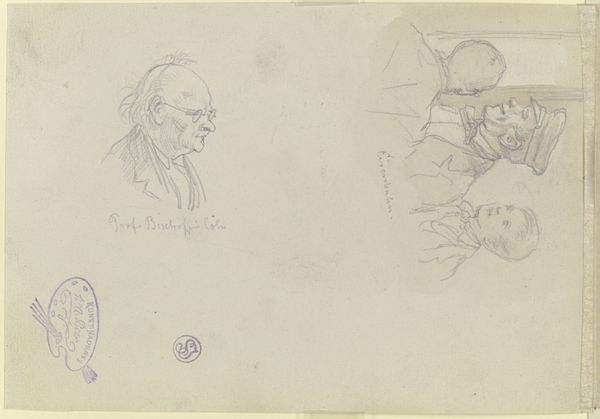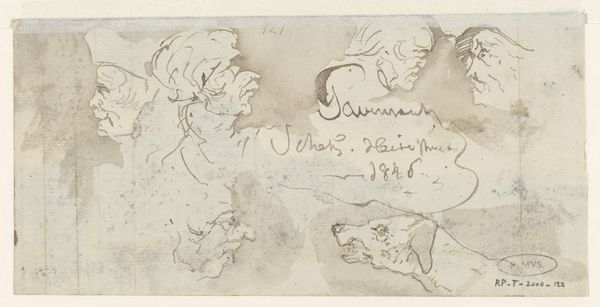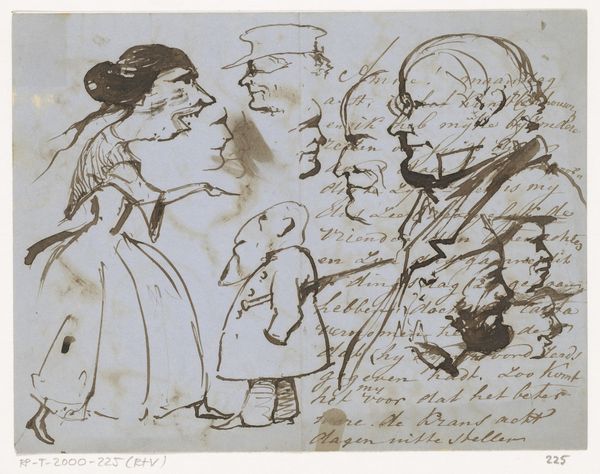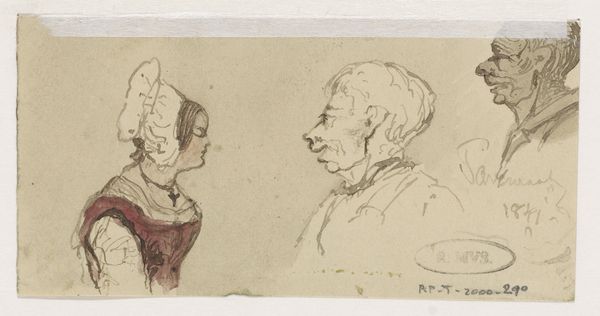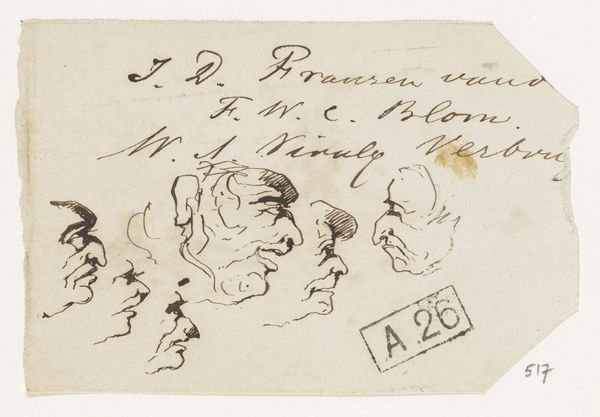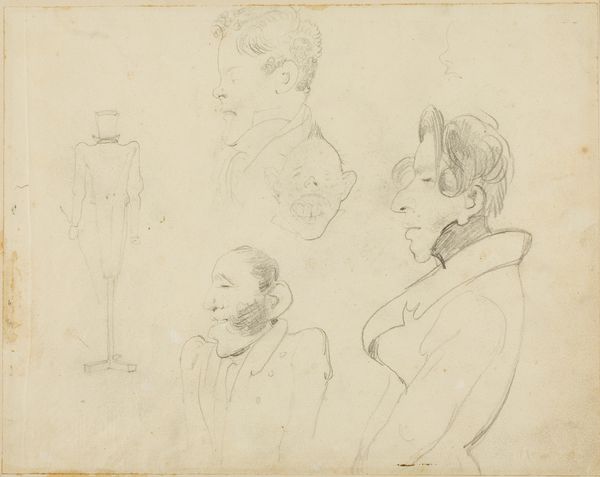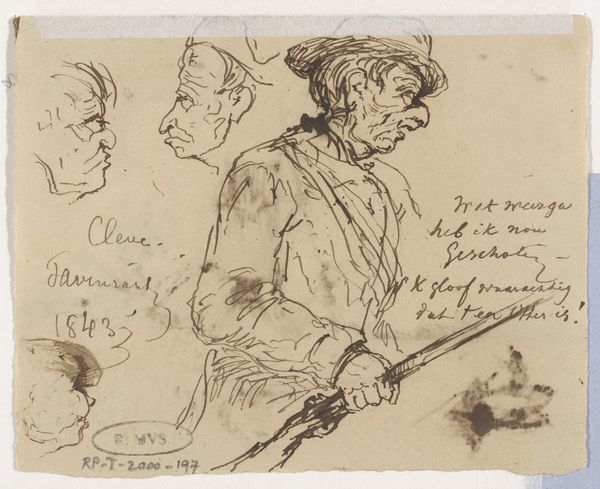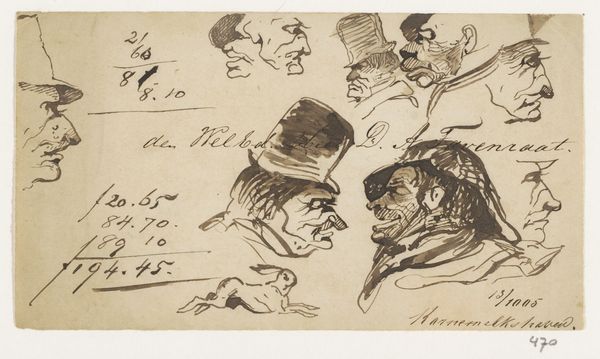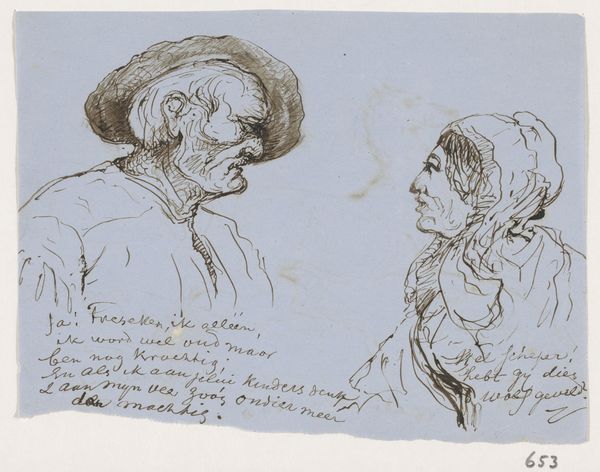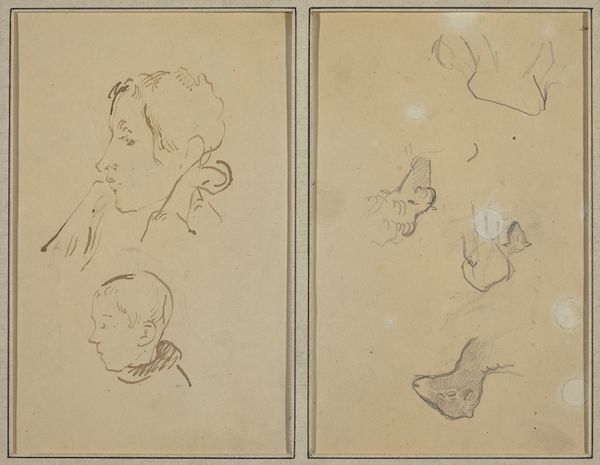
Dimensions: height 105 mm, width 205 mm
Copyright: Rijks Museum: Open Domain
Johannes Tavenraat sketched "Two Heads and a Hare" in Gelderland, September 1868. Look closely, and you’ll observe the hare, a creature steeped in symbolism across cultures. Since antiquity, the hare has been associated with the lunar cycle, fertility, and, paradoxically, fear. Cultures around the world saw the hare as a lunar symbol because of its nocturnal habits and perceived ability to reproduce without mating. But the hare as a symbol shifts, doesn’t it? In some contexts, it signifies abundance and new beginnings, while in others, it represents vulnerability and the constant flight from danger. Consider Albrecht Dürer's "Young Hare", rendered with meticulous detail. The hare transcends mere representation to become an emblem of the natural world's delicate balance, imbued with a sense of both fragility and resilience. Think about the cultural memory embedded in these depictions—how the hare, through centuries of artistic representation, becomes a vessel for collective anxieties and hopes, resurfacing in our subconscious. Like the hare, symbols constantly evade fixed meanings, inviting us to engage with the cyclical progression of cultural memory.
Comments
No comments
Be the first to comment and join the conversation on the ultimate creative platform.
